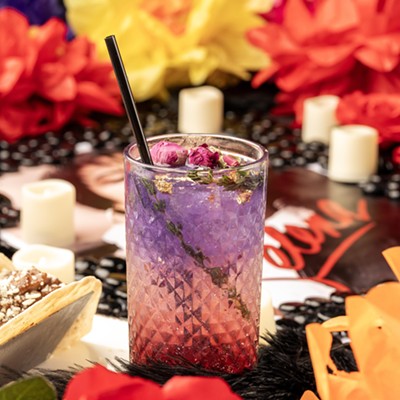I was at Spec's the other evening and ended up in the Port section. I struck up a conversation with a guy who looked a little overwhelmed by all of the different choices and we ended up having a nice conversation about port. Here's some basic information that I hope will help you with your own Port shopping this holiday season.
First off, Port is a fortified wine, meaning that the wine has been topped off with brandy. Originally done to prevent "souring" of the wine that was being shipped from Portugal to England, brandy was added before the fermentation was complete and that left some sugar in the wine, resulting in a sweeter wine that became extremely popular in the U.K.
Secondly, only Port that has been produced in Portugal can be called "Port" with a capital P, similar to the strict naming conventions around Champagne or Roquefort cheese. In the U.S., true Port is labelled Porto or Vinho do Porto. If you run across a bottle of port with a small P, then you've found virtually the same thing, except with its origins in a country such as Australia or Argentina.
To this day, all of the major port houses still use workers to stomp the grapes with their feet. Sure, they've tried mechanical means -- even rubber feet -- but most still continue the practice of using real feet for the process.
When you go upriver from Oporto in Portugal, you come to the grape-growing region of Douro, where the port's process begins. Casks of wine are boated downriver from the vineyards in this northern province to Oporto. When they reach the port houses, they are graded and a decision is made on whether the wine will be better as a cask-aged or bottle-aged port.
Bottle-aged ports are red and include the vintage ports, but not every year is a vintage year. There's a regulatory organization in Oporto that is responsible for evaluating the wine from any given year and declaring it vintage or not. The tradition is that a bottle-aged port needs to rest for 22 years for full flavor.
My wife and I started collecting Ports back when we first got married, with the intention of cracking them open upon retirement. So if you're shopping for a bottle-aged Port, you'll need to either buy one from 1986 or before or sit on it for a while.
Opening the Port can be a challenge. In Oporto, a group of us shared a bottle and the process at the restaurant included heating the neck of the bottle, cracking the glass just below the cork and then slowly decanting the port so that the sediment (yep, there's sediment) stayed in the bottle. The corks seem to be a problem with aged ports, so be prepared. It makes me wonder if they should go to screw tops or synthetic corks to eliminate this problem. Speaking of which, when you're storing Ports, you'll need to turn them every so often to keep the cork from drying out.
Wood-aged Ports include the tawnies and the colheitas. But to further confuse you, there are also ports that are aged in wood for a while and then bottled. This is done to imitate the qualities of a bottle-aged Port but make available a wine that is ready to drink now. You'll want to consider one of these Late Bottle Vintage -- also called "LBV's" or "Crusted Ports" -- for the holidays.
Wood-aged Ports are my favorites. As these ports rest in the casks, they lose their red color (well, there are ruby Ports that are very young and still very red) and develop an amber color. Tawnies have a nutty taste to them. Aged tawnies can be very expensive and you'll see ten year, twenty year, thirty year, etc. aged tawnies on the shelves. It doesn't mean that all of the port is that age; they're simply based upon Ports from one year but are topped off with older or younger wine to help reduce oxidation.
You'll also see blended tawnies that don't carry an age. Colheitas are aged tawnies from only one vintage and are kept in wax sealed barrels until they are ready to be bottled. Vintage Ports, especially those that are older are going to be pretty expensive.
Tawnies can range in price from $20 to $100 a bottle. I'd recommend going to a wine bar or the bar at a good restaurant or hotel and sampling a small glass of their offerings in order to get an idea of which brands you like. That said, the tawny that we drink on a regular basis in our home is Australian! We've found that for everyday drinking, the $12 Clocktower brand is delightful.
For everyday drinking, start out with some of the Australian options (again, this is port with a small P). Use these as a baseline and I guarantee they'll help you appreciate the depth and flavors of a more expensive tawny. In the higher price range, our favorites include the twenty year Ferreira, the twenty year Dow's and the thirty year Taylor Fladgate (big bucks!).
And for those of you who plan to enjoy a cigar with your port, I've come across a terrific little cigar store. They have very reasonable prices and the owner is quite friendly: the Cigar Emporium, located at 3514 South Shepherd at Richmond.
--- Jay Francis





